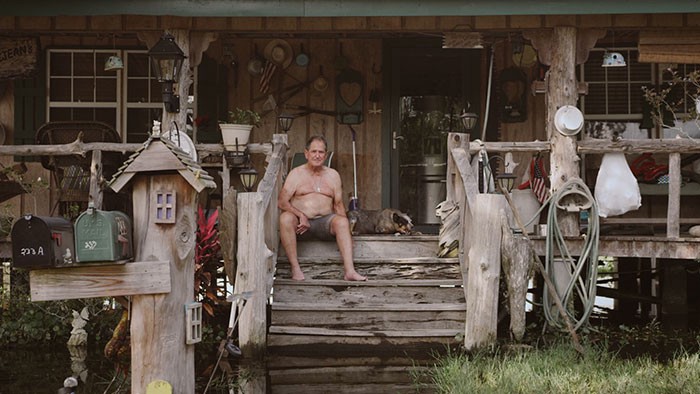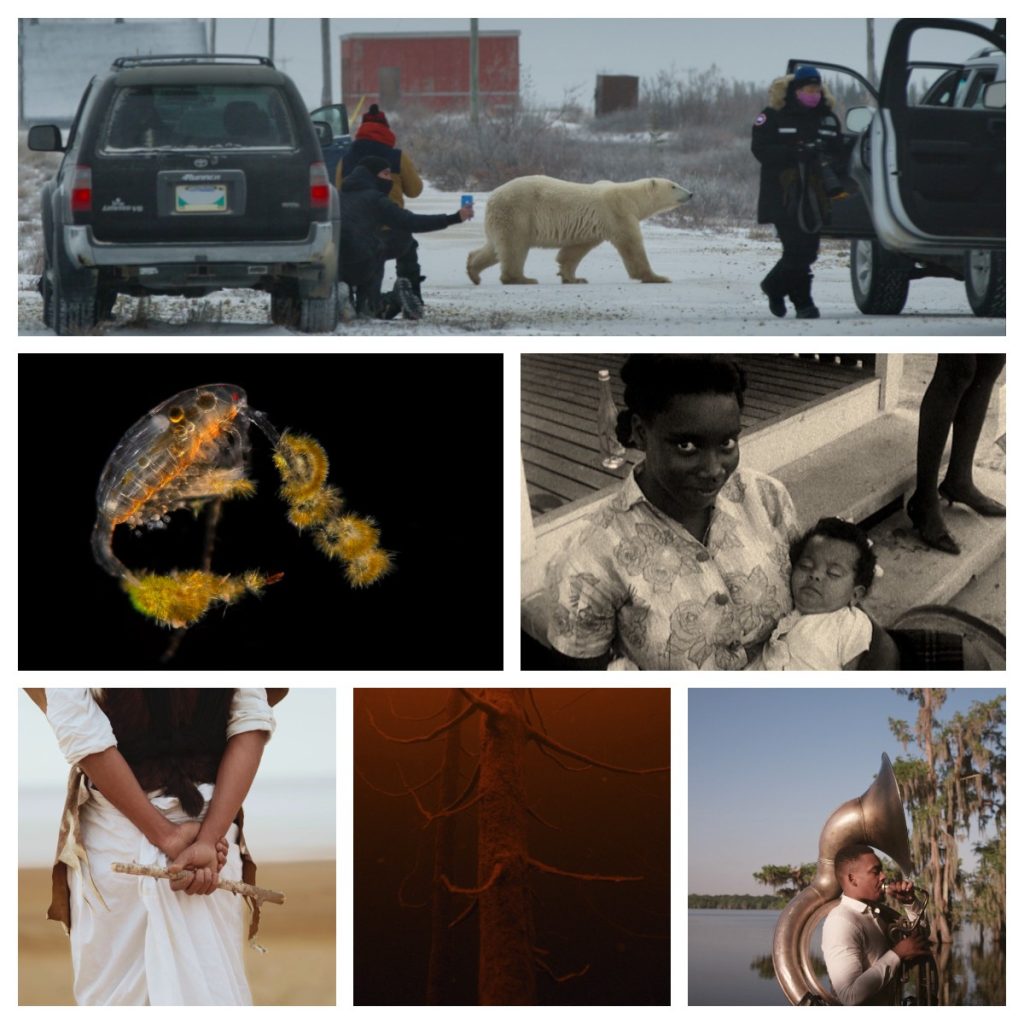This Town Doesn’t Blame Climate Change for its Floods
New documentary spotlights a Louisiana community in denial about the climate crisis.
From the onset of the 11-minute documentary, there is the sense that flooding in Pierre Part is a common phenomenon and one that the community has grown used to.
The calm that’s present throughout the film Belle River is unsettling and compelling. Like that moment before it all goes sideways in a horror movie. Except, in this case, the catastrophic events don’t seem to bother the people living through them, and the boogey monster is climate change.
Shot in Pierre Part, LA — a waterside community of around 3,000 in Assumption Parish — this documentary shows the impacts of a 2019 flood in the Atchafalaya Basin (one of the largest wetlands in the US). Shot in French and subtitled in English, Belle River is the third installment of Québec filmmakers Guillaume Fournier, Samuel Matteau, and Yannick Nolin’s trilogy about life in Louisiana and the Cajun culture there.
The film is part of the Changing Landscapes program at this year’s DOXA Documentary Film Festival. The program features six shorts focused on the changing nature of land and its connection with people.
The catastrophic events don’t seem to bother the people living through them, and the boogey monster is climate change.
Belle River’s opening sequence consists of aerial shots of waterways coupled with the faint tintinnabulation of wind chimes, as a woman’s voice speaks in French about the beauty of the bayou. All is calm.
But then you notice the water is covering people’s yards, and the front steps of their homes and restaurants. It’s creeping up tires and along roadways, places where water is not supposed to be. From the onset of the 11-minute documentary, there is the sense that flooding here is a common phenomenon and one that the community has grown used to. They see it as part of life rather than a consequence of climate change. In fact, the locals in the film never bring up climate change, not once.
Whether they see it or not, the situation is undoubtedly getting worse. Louisiana experienced widespread flooding as a result of Hurricane Isaac in 2012 and again in 2016 because of record rainfall. The 2019 water levels in the Atchafalaya River reached 75 cm above flood stage levels — the result of snow melting in the northern parts of the country due to warmer temperatures, and flowing south through the vast Mississippi River System. (The highest recorded level was an additional 65 cm higher, in 1973.)

This seemingly laissez-faire attitude is the result of generations of resilience on the part of Cajuns. It’s not complacency, it’s survival.
News stories in 2019 were filled with questions about whether the Morganza Spillway would be opened for only the third time since it was built in 1973 (the other time was 2011). If the spillway had been opened to relieve pressure on the rising Mississippi — which it wasn’t in the end — communities like Pierre Part and Belle River would have flooded even further.
“The feeling is surreal,” explains Fournier. “Looking at these places that are completely flooded. It’s so sad and so beautiful.” Fournier and his fellow filmmakers went back to Louisiana to make the final movie of their trilogy without knowing what it was going to be about. He says they knew they wanted to address climate change, especially since the state’s Isle de Jean Charles, also in the Mississippi Delta, is considered the home to the US’ first climate refugees; locals have been relocated because of erosion and flooding. After a chat with some local friends, the filmmakers knew they should check out a flooded community.
A stark contrast between the climate crisis and a population in denial runs through the film, making it hard to watch at points. The subjects spend much of the short talking about their community, their neighbours, the way they help each other out in times of need. It’s comforting and frustrating. You want the people on screen to be more upset about the situation in the Atchafalaya Basin, show more outrage at the state of things as a result of climate change. But they just talk about how they grew up here, that this is the way it is, and how they’ll find a way to live with it.
There’s no formal catharsis or closure for the audience at the end of Belle River, because the problem is real and ongoing.
Fournier says this seemingly laissez-faire attitude is the result of generations of resilience on the part of Cajuns. It’s not complacency, it’s survival.
“The Cajun people are a very resilient people, all starting in 1755,” he says, referring to the expulsion of French-speaking Acadians from Nova Scotia by the British as part of a military power play over the French. “They had to go live in [French-ruled] Louisiana by force. It has a lot of impact on their culture and the way they see life. And just the fact that they found a way to live on the bayou, it’s all very interesting.”
Economics also has a lot to do with why they don’t leave. Louisiana has the second-highest poverty rate (17.8%) in the US, according to data from the US Census Bureau. Fournier points out that the subjects in his film are dependent on employment from the oil producers who are still a major player in the state’s economy: “Their land is completely destroyed because of the companies they work for, but they have a house because of that company and that job, and they don’t necessarily see the link.”

The Changing Landscapes program at this year’s DOXA Documentary Film Festival features six shorts focused on the changing nature of land and its connection with people. Clockwise from top: Nuisance Bear, Listen to the Beat of our Images, Belle River, Forests, Galb’Echaouf, and Planktonium.
There’s no formal catharsis or closure for the audience at the end of Belle River, because the problem is real and ongoing. Near the end of the film, a man speaks about his love for where he lives, saying “There’s no better place in the world,’’ followed by images of him dancing in his kitchen in rubber boots after entering his home, which is surrounded by water.
It is clear that the people in this place want to overcome the flooding as they have so many hardships before. But as the last shots of the film show the Morganza Spillway holding back the swelling Mississppi from flowing into the Atchafalaya Basin, there is the sense that the coming challenges of climate change may prove to be too much.
Vancouver’s DOXA Documentary Film Festival runs from May 5–15, 2022. Changing Landscapes (including the shorts Nuisance Bear, Forests, Planktonium, Belle River, Galb’Echaouf, and Listen to the Beat of our Images) screens in person on May 14 at 8 pm, at The Cinematheque. All of the Changing Landscapes films except Forests can also be screened virtually from anywhere in Canada throughout the festival. Tickets to in-person and online screenings are available on the DOXA website.
Correction: The closing shots of the film were originally described as showing “water spilling out the sides of a local levee.” They show a trickle of water passing around one of the Morganza Spillway’s sluice gates.
